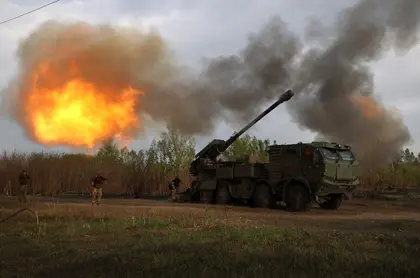A week has passed since USAID stopped operations worldwide, except in Egypt and Israel. Assistance programs simultaneously found themselves without instruction and left in the dark about their future.
Initially, the Donald Trump-led White House’s suspension of aid was declared as temporary – something intended to last for the duration of a three-month audit of USAID expenditures.
JOIN US ON TELEGRAM
Follow our coverage of the war on the @Kyivpost_official.

But the outlook for renewed aid has grown dimmer since USAID leadership had been placed on administrative leave.
Subsequently, Elon Musk, the world’s wealthiest man, charged by the Trump administration with identifying and cutting government waste via the Department of Government Efficiency (DOGE), stated that USAID “cannot be repaired” and claimed that Trump had agreed with his proposal to completely shut it down.
The news shocked many Ukrainians and led to the suspension of numerous projects deemed by many to be critically important to Ukraine, which, as a result of Russia’s full-scale invasion, allocates its entire budget to defense.

Yanukovych-Linked Crime Boss Assassinated in Posh Moscow Apartment Complex
What will Ukraine lose from the aid cutoff? Kyiv Post explored the issue with experts.
Surprises all around
“Our organization just received a phone call saying that all operations were suspended. It was a shock, and now I can’t tell my employees anything except that we are trying to support them,” says the director of an organization that, until now, has been a USAID beneficiary in Ukraine, providing extensive aid to internally displaced refugees.
Now, all affected organizations are trying to retain staff until the audit is completed – if there truly is an audit.
“Three months is a long time. It is crucial that people need to wait, as the situation may change,” says one of the leaders of a territorial community in southern Ukraine.
Halting USAID operations could be devastating for an exhausted country that is spending its entire budget on holding back the Russian army at the front.
According to the Secretariat of the Cabinet of Ministers and the USAID website, as of Dec. 31, 2024, 39 USAID programs were active in Ukraine, with a total budget of $4.28 billion – approximately 2% of Ukraine’s GDP, a significant amount.
How was the money spent?
Rear-area lend-lease problems
Since the full-scale invasion began, USAID has allocated:
- $2.6 billion for humanitarian aid
- $5 billion for development
- $30 billion for direct budget support
“This is our real rear-area lend-lease. Without it, many recovery programs, repairs, and post-shelling restorations – including in the energy sector – would simply be impossible,” one Ukrainian official told Kyiv Post on condition of anonymity.
One of the architects of Ukraine’s Decentralization Reform, former presidential adviser Anatoliy Tkachuk, explains that USAID assistance was well-structured, prioritizing both general support for Ukraine’s rear and reforms.
“It was divided into four major blocks. The first was direct government spending – meaning direct cash transfers to the budget, from which many salaries and pensions were paid. Perhaps the most important was the second block – the development block. This covered most of the infrastructure and energy projects.
In particular, $850 million was allocated for repairs, small gas-fired CHP plants, and protective structures for infrastructure facilities – an amount greater than what war-torn Ukraine itself could allocate. This also included support for the agricultural sector.
When the Russians attacked our grain elevators in 2022, most were repaired thanks to USAID. It also funded support for farmers, including seeds, machinery, and spare parts,” Tkachuk said.

One small example: After the Russian offensive on Kharkiv in May 2024, USAID promptly supplied the city with more than 100 high-power generators, enabling autonomous power supply for all hospitals, schools, administrative buildings, and many industrial facilities.

Additionally, more than 30 cogeneration plants, several dozen transformers, and mobile boiler houses with capacities of up to 1,500 kW each were provided. This played a crucial role in stabilizing the energy systems of Kyiv and Kharkiv – Ukraine’s two largest cities – amid intense attacks.
“The third major block was decentralization. Ukraine decentralized power, delegating authority to locally elected representatives instead of central government appointees.
Communities gained control over local budgets, but since they had little experience managing large-scale projects, proper governance was challenging. USAID provided significant assistance – for example, funding spatial planning projects, which are now required for any construction.
Costs add up
The cost of such a plan for a single rural community is around 20 million hryvnias ($500,000), an unaffordable sum for them. USAID covered these expenses and invested heavily in modernizing infrastructure, utility networks, and energy efficiency. This was the foundation of the modernization of Ukrainian cities and communities,” Tkachuk says.

And the impact wasn’t limited to critical infrastructure.
“We had a project with USAID to build an irrigation system, as our region – Odesa – is very dry. We managed to complete part of it, but some sections remain unfinished because cooperation with USAID was cut off abruptly.
As a result, we won’t have the entire system in place before the start of spring fieldwork, even if the audit ends positively in three months,” says the head of a community in the Odesa region.
Nearly $250 million was also allocated for humanitarian initiatives, such as missile shelters in schools, laptops for teachers, and interactive whiteboards in classrooms. Around $400 million was directed to the healthcare sector, funding critical medicine for seriously ill patients, vaccines, and medical equipment.
“This is a blow that will be difficult to compensate for. Thanks to this assistance, Ukraine was able to redirect substantial funds to the armed forces to repel aggression,” Tkachuk states.
However, the problem is not just that Ukraine is losing a great deal – the United States is too. How? Read in the next part.
You can also highlight the text and press Ctrl + Enter










